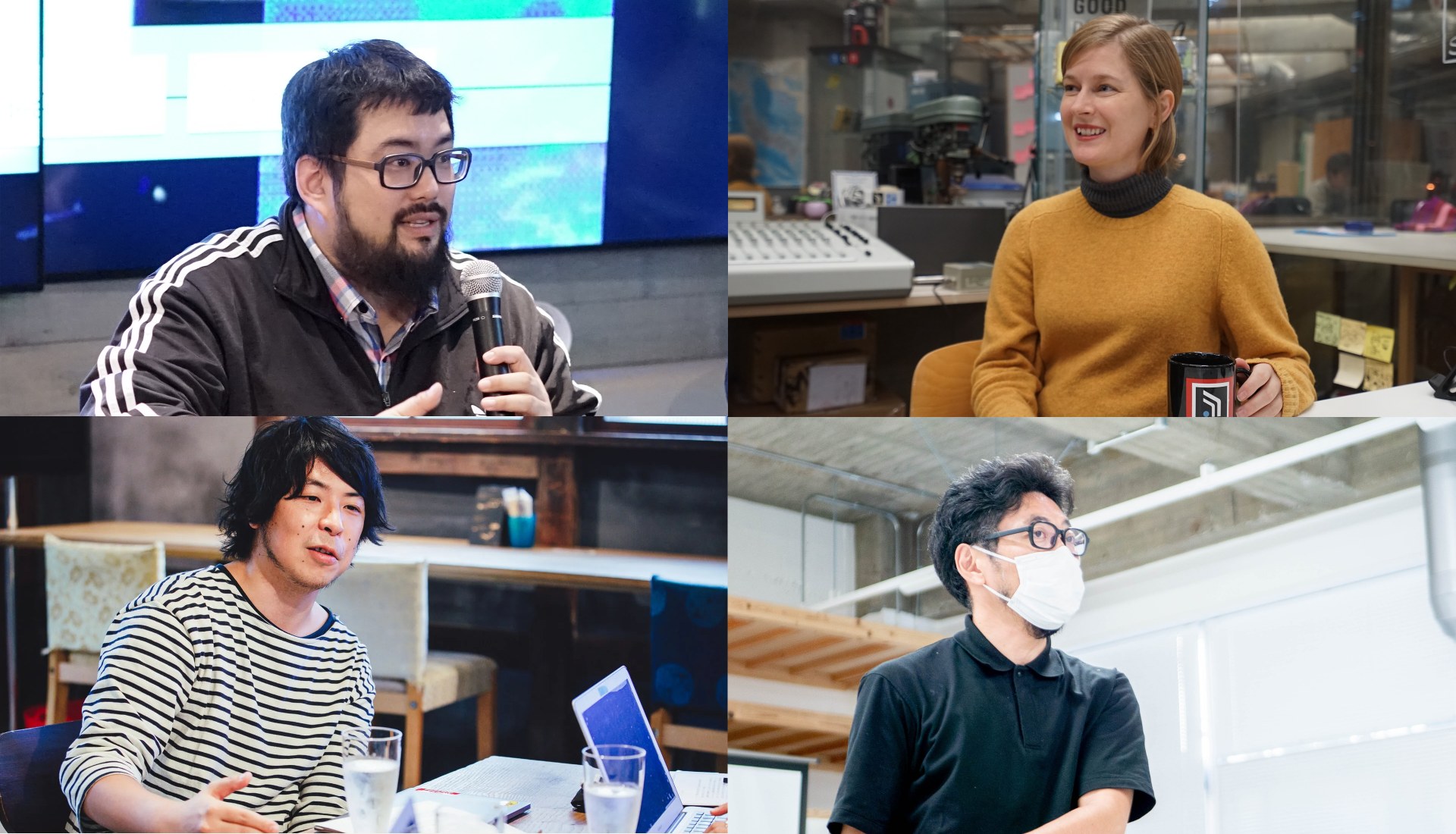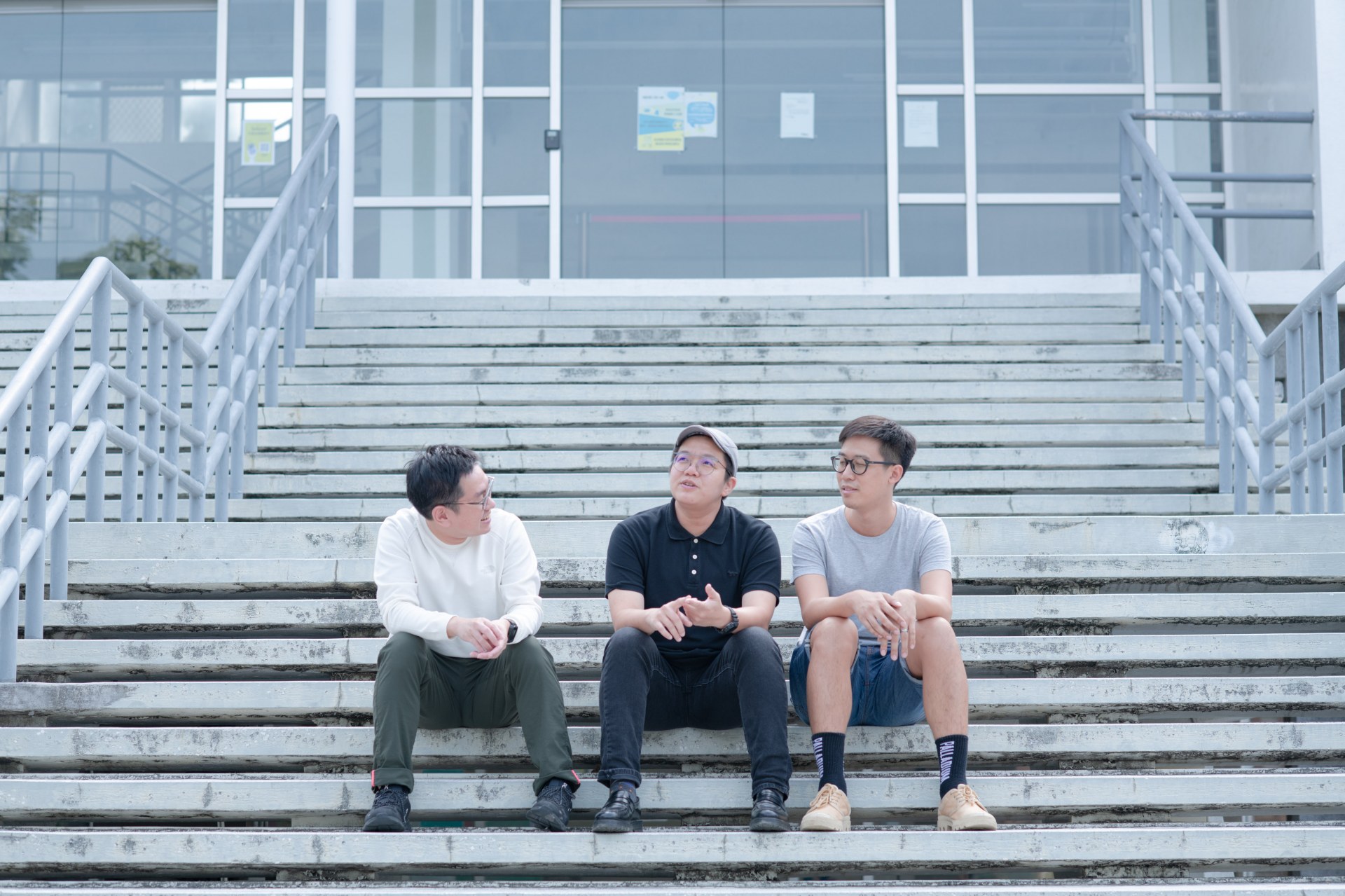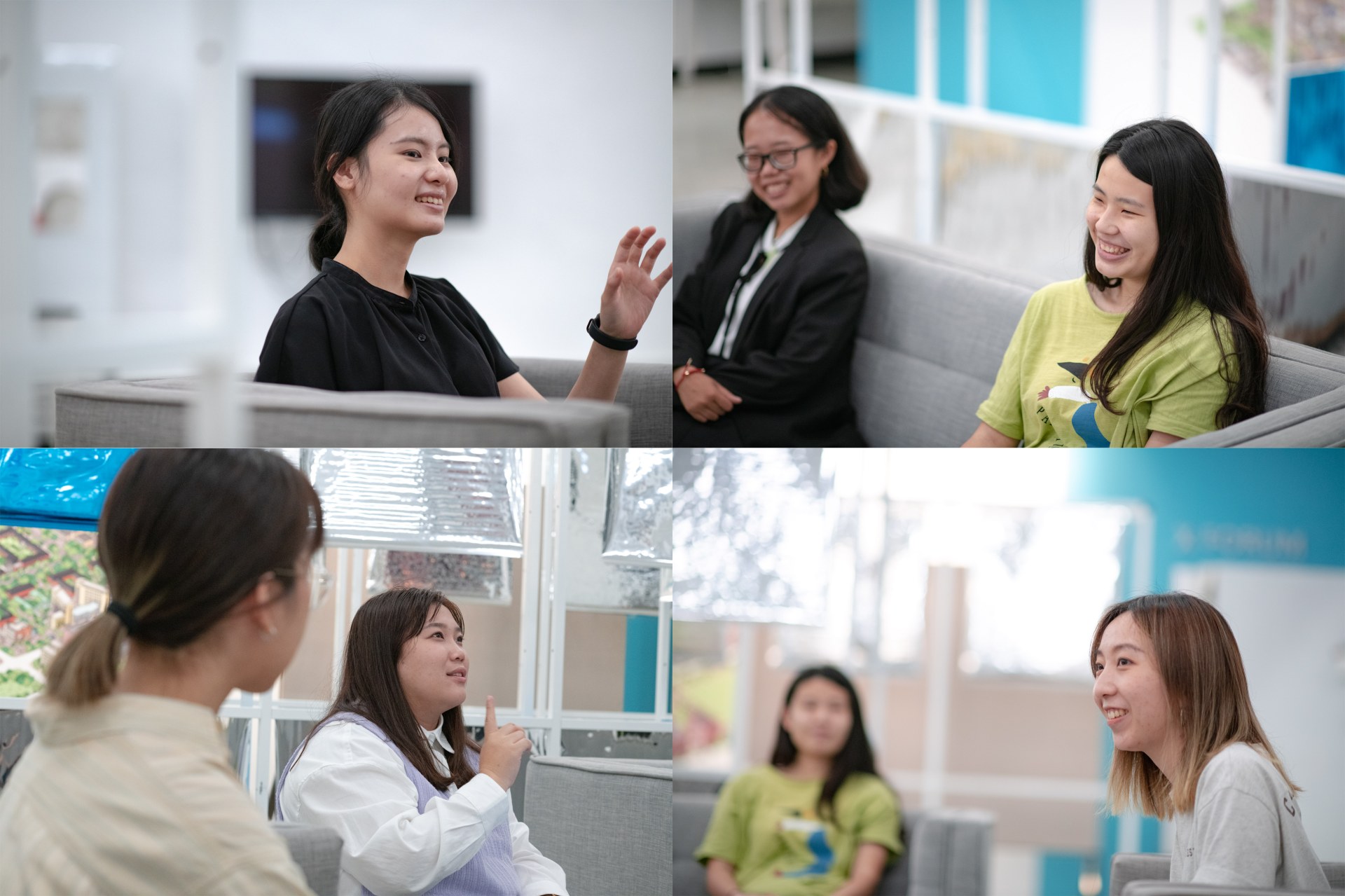Interview
December 20, 2022
FabCafe Global Editorial Team
Loftwork and National Cheng Kung University (NCKU) collaborated to create the Future Dynamic Program, a nine-week, experimental education program. When talking about the future, we usually emphasize communication and co-creation. In this short-term program, in addition to learning technical skills, the lecturers focused on inspiring students to think for themselves, leading them to discover problems and experience frustration while accomplishing more practical work. In a course with no credits, both students and teachers agreed that they looked forward to the possibility of future collaborations.

First we spoke with Leslie Tsai, CEO of Atelier Future, and Tim Wong, Co-founder of Loftwork Taiwan and the Director of the Future Dynamic Program, about how and why the program started at NCKU.
Atelier Future plays the role of advocate and doer of the future at NCKU, but being part of the university system, it is inevitable that it will fall into the already established mindset. Facing the sixth year of operation, Leslie is not ashamed to admit that they are searching for a clear breakthrough.
Leslie (Atelier Future): Loftwork specializes in providing new perspectives and techniques. They work with collaborators to create innovative ways of responding to problems, which matches our vision of the future.The future is complex and constantly evolving, and it is impossible to create the same old rules and regulations. In order to create new possibilities within the educational system, we have to break away from traditional teaching methods.
The program is divided into two parts, with the Creative Leadership Development Program building on the soft power of the students before the practical work begins, focusing on developing their questioning skills and critical thinking. The second stage is to collaborate with a multinational group of lecturers by working in small groups to practically solve local problems in Tainan or NCKU.
Leslie (Atelier Future): In recent years I have felt strongly that there is a need to redesign courses in response to different generations and that educational rehaul is inevitable, and this time I really felt some change from the Future Dynamic program.
Tim (Loftwork Taiwan): Technical learning is certainly important, but why do we insist on leadership development? We think having the ability to think critically and finding your own leadership style is more important for future development.
Leslie (Atelier Future): Seeing how the students thought about the project, solved the problems, helped each other, and continued to move forward for that sense of accomplishment, made me feel the attraction and potential of co-creation.
 In addition, Tim also considered the “idea pitch” as an important exercise in this project, utilizing the context of a business operating model to make the content of the university’s course more in line with real society.
In addition, Tim also considered the “idea pitch” as an important exercise in this project, utilizing the context of a business operating model to make the content of the university’s course more in line with real society.
Leslie (Atelier Future): I hope that through this project, the future of Atelier Future will no longer be a part of the unit in Cheng Kung University, but an independent brand that can really communicate with the public and attract more external attention to what we are doing.
In the traditional learning path, it seems that students are not allowed to make mistakes. Especially among Asian students, we rarely see them actively expressing their opinions and asking questions. But the Future Dynamic program did the opposite. Although the nine-week program was short, it allowed the students to work individually in small groups to develop self-learning attitudes and abilities through failure and mistakes.
“The teacher is not a question-setter, but a partner in the journey forward” was the feedback from students after completing their projects. The students also unanimously commented positively on the process of “personal experience and exploration”.
Paul, a member of Loftwork and one of the instructors, also mentioned that, “Students found ways to move forward in the midst of losing control, and the gains from breaking through the hurdles in front of them were fed back into their personal life experiences”. By replacing traditional teaching with student inspiration, students can explore their own interests and preferences, and student-based community interaction can naturally unfold.

The second stage of the project was divided into three workgroups: “Safecast”, “Circular and Generative design” and “XR Campus”, each with different instructors and different assignments. The nine weeks were very tight, and both students and instructors had to use various software just to overcome the cross-border distance. Therefore, rather than a perfect design, going through the design process and proving that you could was more valuable.
Kyle Li (XR Campus Workgroup Instructor): During the nine weeks, the students showed a high level of curiosity in learning new tools and were able to come up with many interesting ideas in their mid-term reports. This is a very impressive attitude!
Kelsie Stewart (Safecast Workgroup Instructor): The Safecast workgroup was achieved in a hybrid-style between Japan and Taiwan.The students not only learned how to build a kGeigie (a simple breadboard based geiger counter kit) in a short time, but they also deployed Airnotes (air quality monitors) in the process. Their efforts represented an active contribution to the Safecast environmental data set so it was inspiring for me to engage with a new generation of citizen scientists activating the local NCKU community.”
Kosuke Kinoshita (Circular Workgroup Instructor): “I totally feel the ambition of Future Dynamic! Each participating student has a different background in different fields, and it’s not easy to learn very advanced technology in the transition between online and offline. But learning from mistakes definitely allowed students to grow quickly.”
Mizuno Daijiro (Circular Workgroup Instructor): “Although there are still technical problems to overcome when working remotely, we could still work together on projects in different regions with a time difference of 1-2 hours. I think that was fascinating!”
Whether it’s a local issue or a global radiation issue, the Future Dynamic project returns to the same core values: “social interaction” and “practical experience”. When the group of participating students and instructors reach a consensus, they are able to generate enormous amounts of energy in a limited amount of time and develop trust in the team to accomplish the work together.

Leslie (Atelier Future): The program gives no credits, which means that students come for a new challenge or personal accomplishment. What moves me the most is actually seeing them giving feedback to each other, creating a kind of peer-to-peer learning and a mutual back-up atmosphere.
In the traditional learning model, we are often accustomed to competition, and there may be some kind of reward at the end of the racetrack. Future Dynamic pursues not only technical learning, but also focuses on the cultivation of creative leadership, and in this leadership how to help others achieve is key.
In order to achieve good co-creative relationships, we understood that learning how to share idea” is necessary. With traditional group reporting or group work, the problem usually comes in the handover of responsibilities.
Paul Yeh (Loftwork): Out of university, ‘competition’ and ‘cooperation’ will always go hand in hand, and this project is about learning to strike a balance between both.
In addition, the students in this project did not come from the same departments, creating another challenge in terms of interdisciplinary communication.
Horikawa Junichiro (Founder of Orange Jellies and Lecturer of the Circular and Generative Design Workgroup): This is a great opportunity to expand one’s thinking and to develop the ability to work with different collaborators through the perspectives of people from different fields.
Azby Brown (Safecast Leader Researcher and Lecturer of the Safecast Workgroup): We saw the Future Dynamic Program as an opportunity to engage university students in a way that would lead to building a larger volunteer network in Taiwan. That meant that in addition to teaching them about radiation basics and building detectors, we wanted to focus on the human and social aspects, and how to build a citizen science network… they are now officially Safecast volunteers, and can easily communicate with others. I think the students were surprised that they were able to quickly bring together people around them to form a volunteer “node” in Tainan, and now they understand that it mainly requires person-to-person skills.


Atelier Future aims to give students a new perspective on campus, where they can experiment with their creativity and try different things. Therefore, with this Future Dynamic Program, there is a hope that students can think about the problems that can be improved on campus, make proposals for the future, and take action. Only after experiencing this process, will they develop the habit of trying to think for themselves. In this regard, Prof. Kobayashi also encouraged students to “Spend more time in the future to test their hypothesis and design solutions and to conduct more in-depth research”.

Prof. Kobayashi (IAMAS Professor and Lecturer of the Circular and Generative Design Workgroup): How can the Creative Leadership Program become a program or course on its own? As an extension of this project, Leslie was bold enough to come up with a new idea. If there are creative leaders who play the role of facilitators, interesting things will keep happening. In addition, after the experience of this project, I look forward to more opportunities to collaborate with external organizations in the future.

After this nine-week experiment, the participating students were impressed by Loftwork’s cross-country and interdisciplinary approach to work. Some mentioned that seeing something happen from scratch was the biggest personal gain. Perhaps it is because this is a course without University credit, and due to the fact that it may not seem to have an immediate tangible reward, that the students who joined were genuinely passionate and eager to create new ideas.
Each week demonstrated an exciting and cumulative progress. Some of the students questioned themselves in the second half of the course, asking, “Why did I work so hard when I didn’t receive any credits?”. Later, these same students replied to themselves and their colleagues, “If you don’t have the determination to come to class every week, you shouldn’t sign up!”. This change in mindset highlights the effectiveness of the program as a tool to encourage students to find their own answer to why they choose to study to begin with.
-
FabCafe Global Editorial Team
This articles is edited by FabCafe Global.
Please feel free to share your thoughts and opinions on this article with us.
→ Contact usThis articles is edited by FabCafe Global.
Please feel free to share your thoughts and opinions on this article with us.
→ Contact us
